If you’re a fan of bonsai trees, you’ve probably heard of the golden scorpion flower (Cassia fistula). Let’s explore the characteristics, uses, and symbolism of this unique flower.
1 What is the Golden Scorpion Flower?
Origin and Significance of the Golden Scorpion Flower
 Origin and Characteristics of the Golden Scorpion Flower
Origin and Characteristics of the Golden Scorpion Flower
The golden scorpion flower, also known as muồng hoàng yến or cây hoàng hậu, is native to South and Southeast Asia. It belongs to the Fabaceae family and has the scientific name Cassia fistula. This tree can grow quite large, reaching heights of 5-20 meters.
Characteristics and Classification of the Golden Scorpion Flower
The golden scorpion flower is a large tree with a height of 5-20 meters and a trunk diameter of approximately 40 centimeters. The bark is grayish-white, and the inner bark is pink and about 6-8 millimeters thick. The leaves are oval-shaped, growing up to 7-21 centimeters long and 4-9 centimeters wide, with pointed tips.
The golden scorpion flower is a large tree that can grow up to 5-20 meters tall, with a trunk diameter of around 40 centimeters. Its bark is grayish-white, and the inner bark is a pinkish hue, approximately 6-8 millimeters thick. The leaves of this tree are oval-shaped and grow in pairs, with a length ranging from 7-21 centimeters and a width of 4-9 centimeters. They come to a point at the tip.
The flowers of the golden scorpion tree typically bloom in long, drooping clusters, about 20-50 centimeters long. Each flower has five bright yellow petals in the shape of a bean, with a downy-haired ovary.
 Characteristics and Classification of the Golden Scorpion Flower
Characteristics and Classification of the Golden Scorpion Flower
Color Significance: In many cultures, yellow represents luck, prosperity, and abundance, often associated with a bountiful harvest. It is believed to bring peace, harmony, and fulfillment.
 Origin and Characteristics of the Golden Scorpion Flower
Origin and Characteristics of the Golden Scorpion Flower
The golden scorpion flower is considered the national flower of Thailand and is a symbol of the Thai royalty.
In Buddhism: The golden scorpion flower represents the unity, love, and harmony of the Thai people.
2 Benefits of the Golden Scorpion Flower
Health Benefits
In traditional Eastern medicine, various parts of the golden scorpion flower are used to treat ailments such as colds, fever, joint pain, and digestive issues. Additionally, the pink inner bark is often used as a natural dye.
The roots of the plant are particularly effective in treating colds and reducing fever. The fruit pulp is a mild and safe laxative, especially beneficial for the elderly and children.
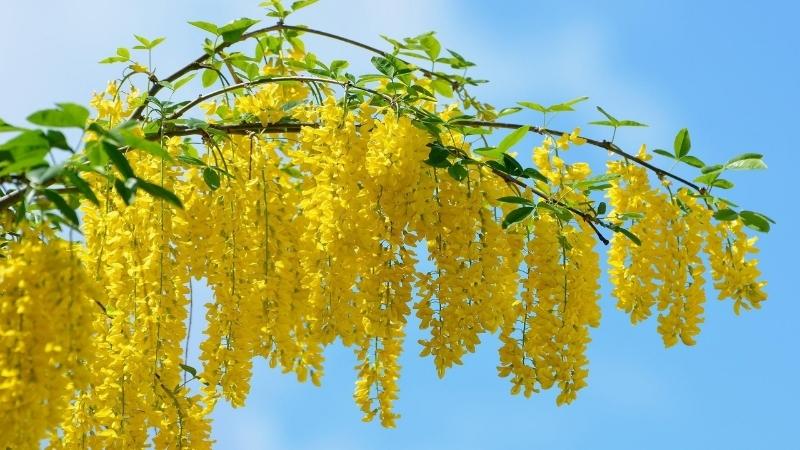 Health Benefits of the Golden Scorpion Flower
Health Benefits of the Golden Scorpion Flower
Benefits to the Landscape
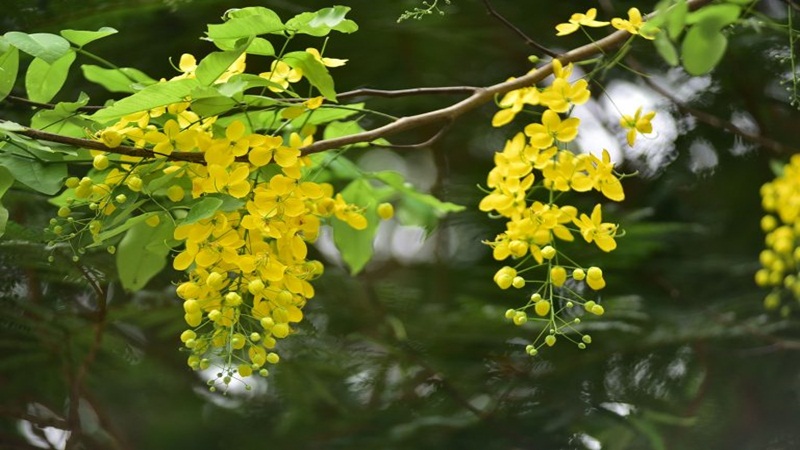 Benefits of the Golden Scorpion Flower
Benefits of the Golden Scorpion Flower
The golden scorpion flower is often used as a shady ornamental tree due to its wide canopy and rapid growth. You’ll find these trees lining streets, in parks, and along sidewalks. Resorts and hotels also plant them to attract tourists during their blooming season.
Additionally, the wood of the golden scorpion tree can be used for construction and crafting household items and agricultural tools. Planting these trees in large areas can also help with environmental and soil improvement.
3 How to Grow and Care for the Golden Scorpion Flower
Growing the Golden Scorpion Flower at Home
 Growing the Golden Scorpion Flower
Growing the Golden Scorpion Flower
Choose a well-drained, nutrient-rich, and loose soil for the best growth and development.
Propagation: Propagate the golden scorpion flower by sowing seeds. Select healthy seeds and soak them in hot water (48-52°C) for about 5 minutes. Then, wrap the seeds in a damp cloth to encourage germination. Finally, bury the seeds in the soil and cover them with a thin layer of earth. Water regularly, and the seeds will soon sprout.
Planting: Once your seedling reaches a height of 20-40 centimeters, it’s time to transplant it to a larger space outdoors so it can continue to thrive.
Caring for the Golden Scorpion Flower
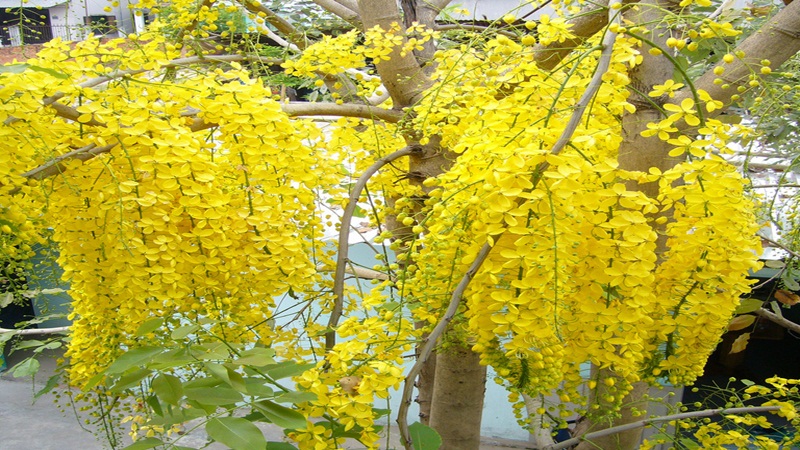 Caring for the Golden Scorpion Flower
Caring for the Golden Scorpion Flower
Fertilizer: Feed your tree with NPK fertilizer every 2-3 months. During the flowering season, you can apply additional fertilizer to encourage blooming.
Watering: The golden scorpion flower is drought and salt-tolerant. Water your tree twice a week to keep it healthy.
Light: This tree thrives in sunny and spacious areas, so make sure to plant it in a location with ample sunlight.
Temperature: The ideal temperature range for the golden scorpion flower is 18-28°C.
Pest Control: Prune any yellow or withered leaves. To prevent stem-boring insects, apply lime to the tree’s base and spray insecticides as needed.
Notes on Growing and Caring for the Golden Scorpion Flower
Two to four weeks before planting, reduce watering and stop fertilizing. This helps toughen the young tree and adapt to its new environment. For trees with a trunk diameter of 8 centimeters or more, prune the young branches and 2/3 of the canopy, leaving only 1/3. The soil should be nutrient-rich and loamy, with plenty of organic matter.
The golden scorpion flower is prone to stem and leaf-eating insects. Regularly inspect your tree and spray pesticides to keep it healthy.
 Notes on Growing and Caring for the Golden Scorpion Flower
Notes on Growing and Caring for the Golden Scorpion Flower
4 Five Beautiful Images of the Golden Scorpion Flower
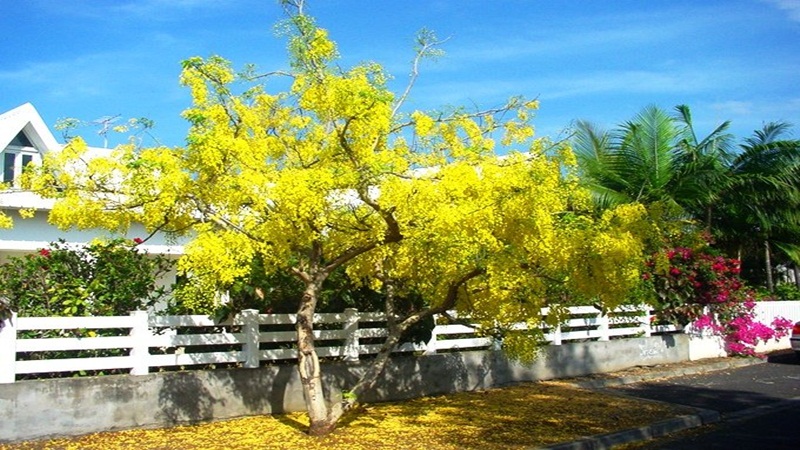 Golden Scorpion Flower in Full Health
Golden Scorpion Flower in Full Health
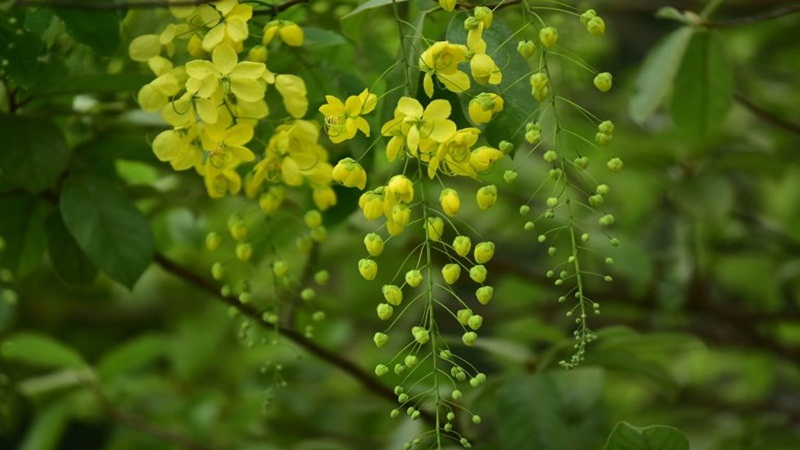 Buds Ready to Bloom
Buds Ready to Bloom
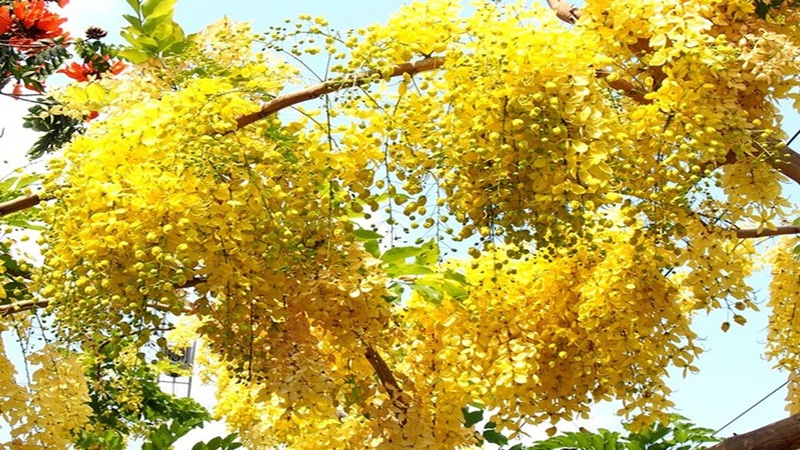 Golden Scorpion Flower in Full Bloom
Golden Scorpion Flower in Full Bloom
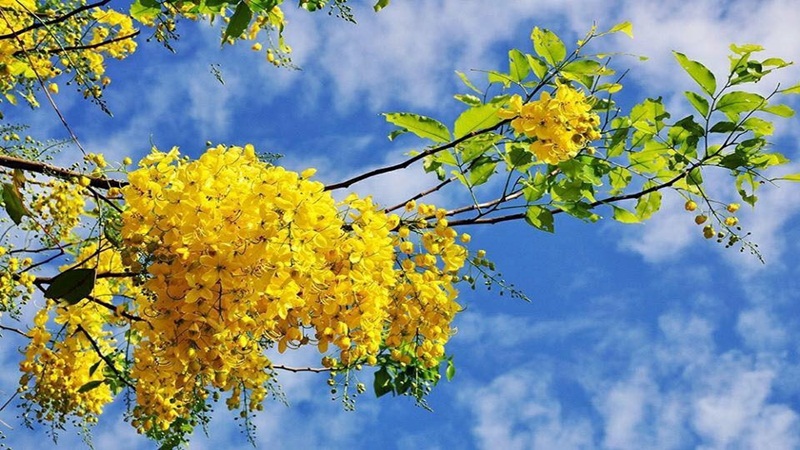 Golden Scorpion Tree in the Sunlight
Golden Scorpion Tree in the Sunlight
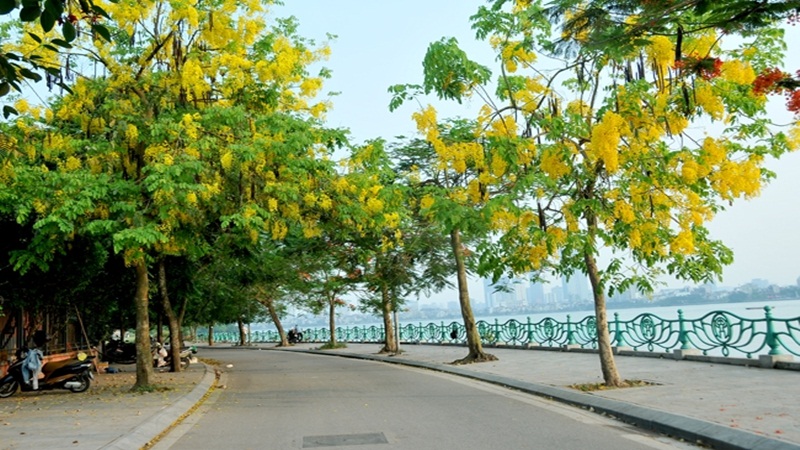 Golden Scorpion Trees Lining the Sidewalk
Golden Scorpion Trees Lining the Sidewalk
We hope this information helps you understand the golden scorpion flower’s significance and how to grow and care for it. With the right care, your tree will bloom beautifully!






































